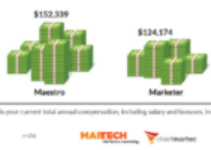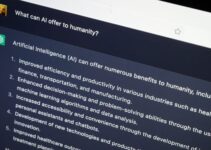Cautionary views around AI expressed by advertising and creative professionals attending South by Southwest last week clashed with those of technology leaders, who focused on its societal benefits and pushed for faster development.
AI dominated programming at SXSW 2024, as it has other business conferences so far this year including the World Economic Forum and the Consumer Electronics Show.
The technology’s vast impact was reflected across SXSW programming, with sessions exploring AI’s influence on art, astrophysics, atomic energy, healthcare, Hollywood, journalism and music.
Tech giant IBM sponsored an AI Track featuring more than 50 panels and presentations.
During the technology portion of SXSW, which kicked off on March 8, leading tech figures including Peter Deng, head of OpenAI’s ChatGPT and Lisa Su, CEO of AMD, discussed the transformative power of AI and pushed back against calls to slow down development so guardrails can catch up.
“Those who are a little bit worried about what AI will do, the answer is not, go slower,” Su said in a keynote session. “The answer is to be very cognizant of the risks — so we think about that. But this technology is so powerful, so transformational, we must go faster, we must experiment, but do it with a watchful eye.”
Deng said challenges can only be “sussed out” by releasing technology “at a responsible rate.”
During a featured session called “AI and Humanity’s Co-evolution,” OpenAI’s Deng touched on another area of debate; the impact of AI on the workforce. Rather than addressing job losses — a major concern about AI across industries — Deng carefully crafted a narrative of AI’s power as a “thought partner” to humans, suggesting workers who use it will likely outperform those who don’t.
“I actually think that AI fundamentally makes us more human,” he stated.
But attitudes towards the technology grew more cynical as the nine-day festival went on and the creative crowd filtered in.
Deng’s comment was included in a sizzle reel — composed of SXSW panelists enthusing over AI — that played ahead of film screenings of The Fall Guy and Immaculate and was met with a chorus of boos. AI’s risks to the film and TV industry was a central dispute in the actors’ and writers’ strikes last year.
Nevertheless, AI’s dangers were not given as much airtime at the festival as its benefits: While some sessions tackled AI’s risk to democracy, most companies are vying to gain a competitive advantage in AI and were therefore incentivized to focus on the positives.
“We’re still, from my perspective, deep in the [AI] hype cycle, and what happens when you’re deep in the hype cycle is that you have irrational exuberance with regard to technology and what it can do,” explains Brian Fletcher, global chief technology officer at digital agency Huge.
“Every technology is like a double-edged sword,” Raja Rajamannar, chief marketing and communications officer at Mastercard, tells Campaign US. “There are great positives if you use it for good, and there are great negatives if you use it for bad. I think everyone is grappling with that.”
What’s unique about AI is how it triggers society to consider the value of humans versus machines.
“The name artificial intelligence…triggers in some ways this moment of contemplation of what makes us innately human,” says Chris Duffey, strategic development leader for emerging solutions at Adobe.
The tensions between AI and creativity
Much like the diverging opinions that emerged at SXSW, ask an advertising icon and a new-breed creative technologist what they think about the AI revolution and you’ll get two different answers.
The disconnect boils down to what they consider a greater display of creativity: original ideas or personalized assets at scale.
“I know I’m supposed to be really optimistic about it,” says Jeff Goodby, co-founder and co-chairman of San Francisco agency Goodby, Silverstein & Partners. “It’s a cliché among creative people to say, ‘AI is my partner, it’s like having another person in the room.’ And it is, to a degree. But I do feel that we have to remember and honor the things that are unique about us as humans.”
While Goodby believes AI can help creatives by visualizing concepts or coming up with “unexpected” ideas, he contends that human creativity will be essential for brands to break out of the sea of sameness generated by AI.
“The thing that scares me is that people will start asking that more and more of their advertising just be done by AI, it’s good enough. Good enough is not good, and it’s not good for our heads and it’s not going to make breakthroughs in the world,” he says.
But from the same agency, Martin Pagh Ludvigsen, director of creative technology and AI, assuredly describes AI as enabling “the golden age of creativity” due to the “democratization of creativity” that these new tools open up.
“Specifically, you don’t have to be a great illustrator to sketch out your idea,” he says.
Anthony Yell, chief creative officer of Razorfish, says generative AI tools “have revolutionized how quickly we’re able to take an idea in our head and put it down on paper.”
Adobe’s Duffy effused about the ability for generative AI to create “millions” of assets to enable greater personalized experiences for consumers.
AI’s barriers
Goodby is judicious about limiting use and “not letting AI creations out of the building.”
To him, the barrier preventing AI from being used more widely is a legal one.
“We are using very valuable client commodities — like package designs and logos — that you have to really be careful about,” he explains.
Executives in technology roles, on the other hand, describe technical barriers inhibiting AI’s use. Pagh Ludvigsen says AI tools “still require technical knowledge.”
“It’s still very complicated and often too soon to start using it in our work, so we’ve got to wait until the more approachable, accessible version of the tools is made available for our creatives to use,” he says.
“The tech stack is infinitely complex,” adds Adobe’s Duffey.
For creatives, there’s also a technical skills gap to consider, according to Huge’s Fletcher.
“The need for people who understand technology, who understand how these pieces fit together, is still going to be just as high as ever,” he says.
Technology experts largely agree that AI will create more jobs than it takes away, leading to a change in the workforce, rather than a mass retraction, consistent with past evolutions. As Fletcher puts it, “calculators did not make accountants obsolete.”
But such statements underestimate AI’s impact across industries, believes Mastercard’s Rajamannar, who says the technology will create “a societal problem to solve for.”
“The reality is, if you’re a copywriter today, and an agency requires 20 copywriters, tomorrow the agency might require less,” he says. “It’s easy to say, ‘Oh, you can go and upskill yourself for the future.’ If you’re in your 40s or 50s, it’s not an easy thing.”
Goodby worries that creative talent won’t be adequately remunerated in the future.
“There’s a real danger…that the cost of those jobs will somehow get out of whack with what people are willing to pay,” he says. “Because we don’t really have a rate card for AI. I think that clients think it’s free. We think it takes more direction than they think it does. And we’ll have to work out some middle ground at some point.”
No choice but to trust big tech
At this point, calling for tech companies to slow down the release of new AI technologies to address their risks may be unrealistic, suggests Rajamannar.
“Even if you slow down in one country, there are 40 other countries who are also working on AI, and they will speed up if one slows down,” he said, adding that regulation “has to catch up” so AI doesn’t become a “runaway train.”
Rapid AI development has led to some positives, such as faster drug discovery, better energy efficiency and more food security. Rajamannar is also president of Mastercard’s healthcare business.
But even AI developers have acknowledged the need for regulation, which trails the pace of innovation — regulators have limited resources and must obtain several layers of approval before passing a law, processes that take years.
As for the immediate risks of AI — especially in the biggest election year in history — consumers and regulators have no choice but to rely on tech companies to self-police for now.
“The best research being done in machine learning and AI right now is being done by the big tech companies, because we’ve gotten to a point where they are the only ones who have the resources and the talent to do it. So it has, for a large part, moved out of academia and onto big tech. That means that we are also at a place where we have got to keep our fingers crossed that they try not to be too evil,” says Pagh Ludvigsen.


